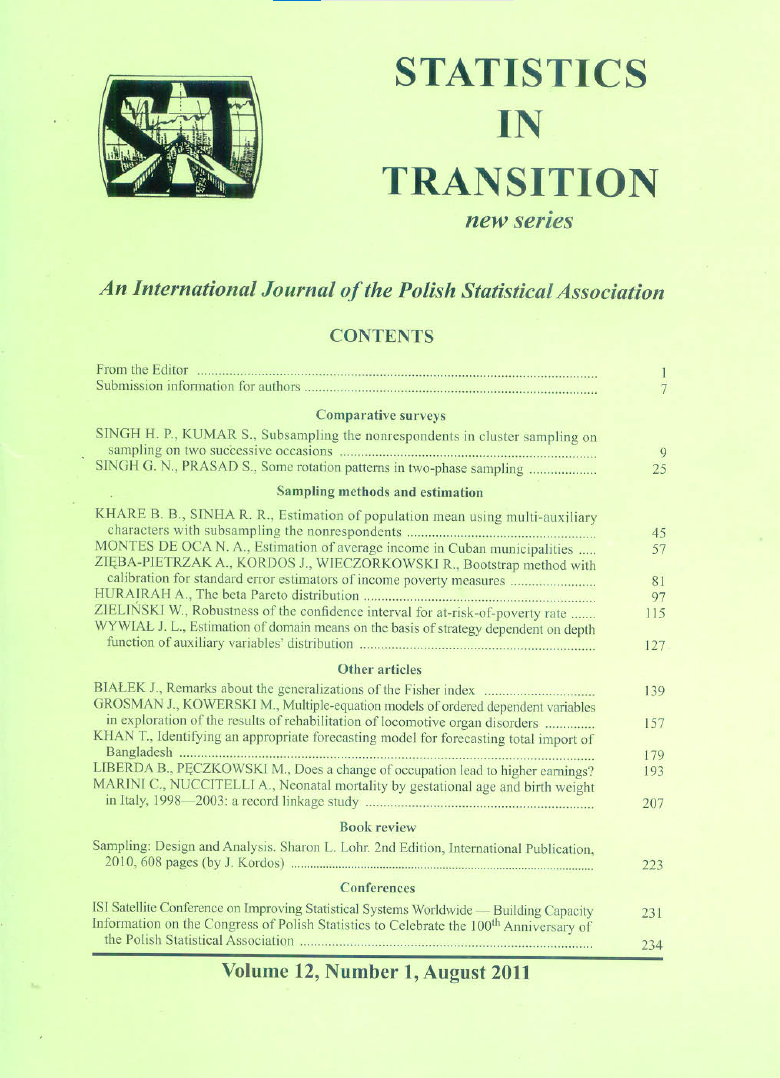ARTICLE
ABSTRACT
This article asserts that diversification to produce small area statistics for different fields in Cuban society should be a priority for the National Statistics Office. The key question about small area estimation is how to obtain reliable local statistics when the sample data contain too few observations for statistical inference of adequate precision. The social research presented here is focused on finding small area estimates which are more precise than the direct estimates of monthly mean income for people aged 15 and over at a municipal level. In this case, all 169 Cuban municipalities are considered small areas of interest.
The empirical results obtained from this application are only intended to provide a first impression of the usefulness of applying small area estimation methods in Cuba. This study yields more precise estimates than the direct estimates for small areas/domains, even though in Cuba, as in any other developing country, the search for suitable auxiliary variables is used to "borrow strength" from neighbouring areas or domains may frequently be an important limitation.
KEYWORDS
small area estimation, borrow strength
REFERENCES
BUTTAR, F., AND LAHIRI, P. (2003). On measures of uncertainty of empirical bayes small-area estimators. Journal of Statistical Planning and Inference, 112, 63-76.
CHAMBERS, R., and TZAVIDIS, N. (2006). "M-quantile models for small area estimation". Biometrika 93(2):255-268.
FABRIZI, E., FERRANTE, M.R., and PACEI, S. (2007). Small area estimation of average household income based on unit level models for panel data. Survey Methodology, vol. 33, No. 2, pp. 187-198. Statistics Canada, Catalogue no.12-001-X.
GOLDRING, S., LONGHURST, J., and CRUDDAS, M. (2005). Model-Based Estimates of Income for wards, 2001/2002. Technical Report. Office for National Statistics (ONS).
GOLDSTEIN, H. (1989). Restricted unbiased iterative generalised least squares estimation. Biometrika, 76: 622-623.
HALL, P., and MAITI, T. (2005). Nonparametric estimation of mean-squared prediction error in nested-error regression models. Sep. http://arxiv.org/abs/math/0509493.
HANSEN, M.H., HURWITZ, W.N., and Madow, W.G. (1953). Sample Survey Methods and Theory. New York, Wiley.
JIANG, J., LAHIRI, P., AND WAN, S.M. (2002). A unified Jackknife theory for empirical best prediction with M-estimation. The Annals of Statistics, 30, 1782-1810.
ONE. (2005). Disefio Muestral General del sistema de encuesta de hogares." Havana. Oficina Nacional de Estadisticas.
PFEFFERMAN, D., AND GLICKMAN, H. (2004). Mean square error approximation in small area estimation by use of parametric and nonparametric bootstrap. ASA Proceedings of the Survey Research Methods Section.
PRASAD, N.G.N., AND RAO, J.N.K (1990). The estimation of mean squared errors of small area estimators. Journal of the American Statistical Association, 85, 163-171.
RAO, J.N.K. (2003). Small area estimation. Wiley series in survey methodology.
RICHARDSON, A.M., and WELSH, A.H. (1995). Robust Restricted Maximum Likelihood in Mixed Linear Models. Biometrics, 51, 1429-1439.
SARNDAL, C., SWENSSOn B., and WRETMAN J. (1992). Model assisted survey sampling. Springer Series in Statistics.
SINHA, S.K., and RAO, J.N.K. (2009). Robust Small Area Estimation. The Canadian Journal of Statistics, to appear.
